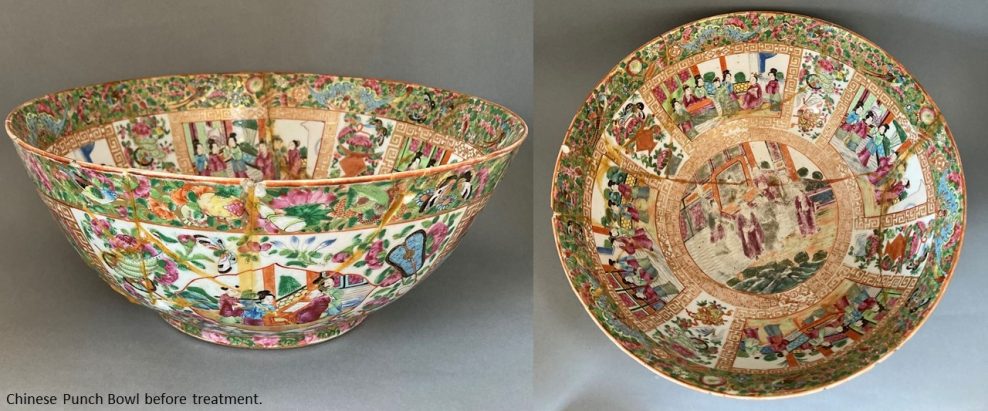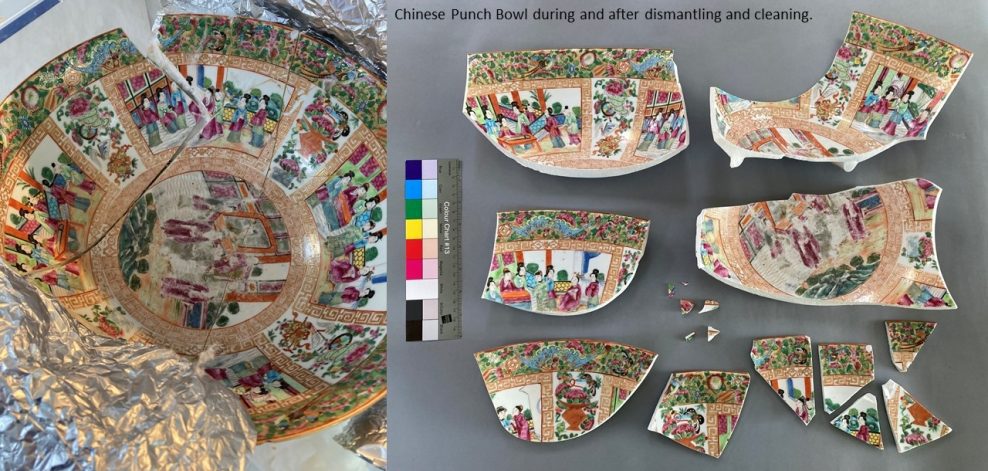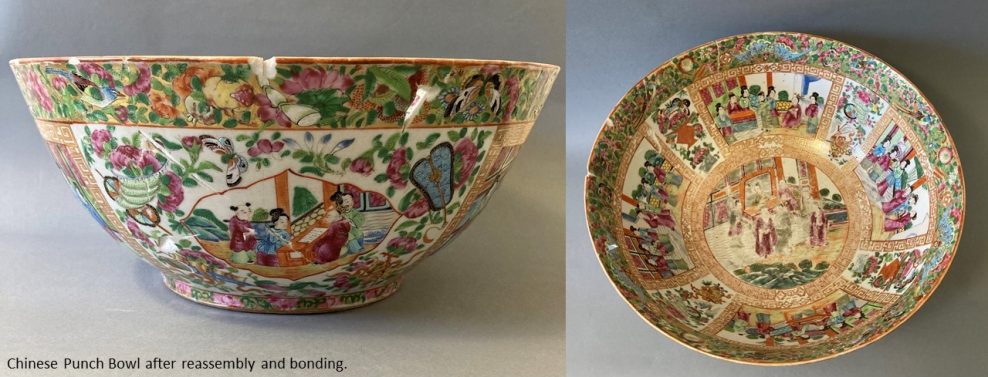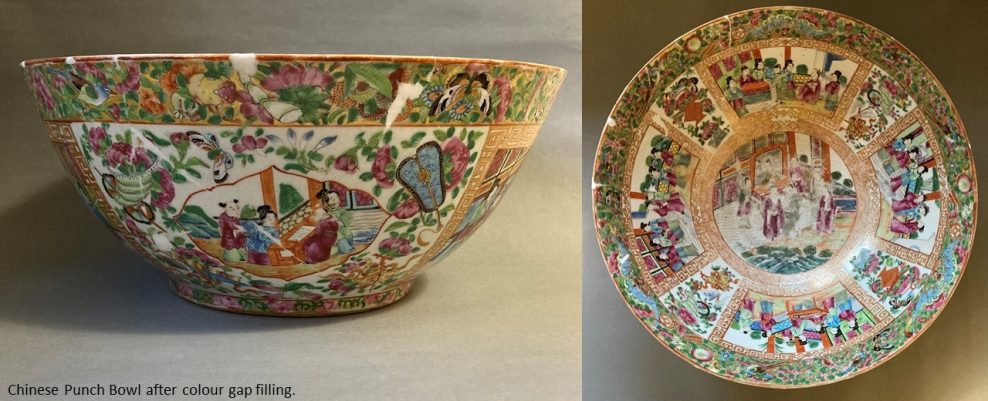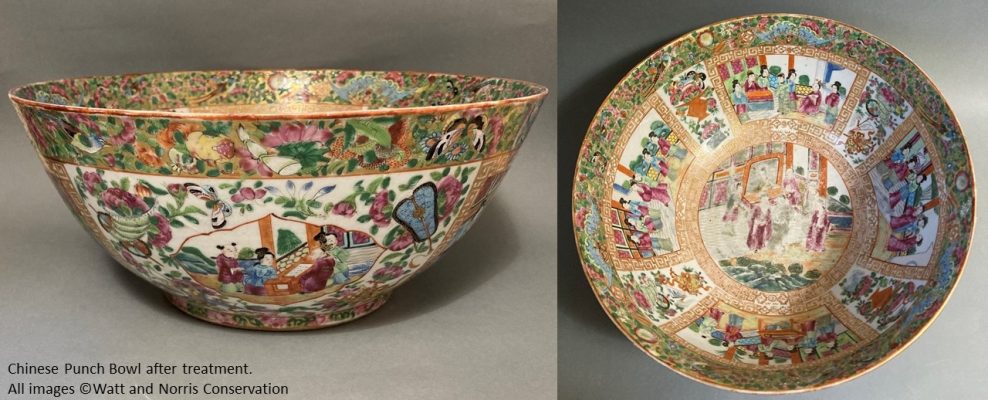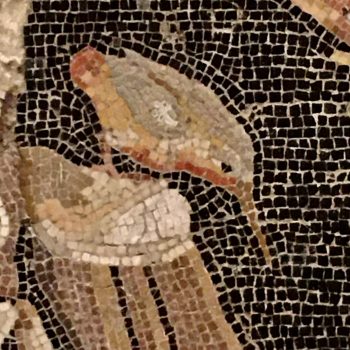Projects
Punch Bowl
A 19th century Cantonese porcelain bowl decorated with colourful overglaze enamels and gilding. This punch bowl is a treasured family heirloom passed down through four generations from Captain William Stuart of the merchant clippers Tweed and Loch Etive.
The Punch Bowl is a finely painted example of Chinese export porcelain. It features figurative garden scenes surrounded by geometric gilded borders briming with auspicious symbols, birds, fruit, flowers, and butterflies. It is an important example due to the exceptional provenance, having been acquired by Captain Stuart between 1863 and 1893. The bowl was used by Captain Stuart’s wife to make junket every Sunday, evidenced by the distressed enamel painting on the interior base. It was broken about forty years ago and lovingly reassembled with a generous amount of adhesive, thankfully this prevented any large sections being lost. The bowl had several small losses and slightly misaligned joins, which in combination with the adhesive going yellow over time, was very distracting.
The aim of this treatment was to bring the bowl back as close as possible to its original appearance for display (except for the distressed enamels in the base which are an important part of the object’s family history). This treatment had two main challenges, the translucency of the hard paste porcelain body, and the extensive gilding which is delicate and can’t be polished.
After tests, the bowl was dismantled, and the adhesive removed from the break edges. Once clean, the bowl was reassembled taking care that the joins were correctly aligned, and then bonded with a conservation grade adhesive. The losses were filled using a technique called colour gap filling, where a transparent resin is bulked to make a paste, and then tinted to match the colour and opacity of the porcelain. In this project, great care was taken to apply the fills as accurately as possible because they could not be polished easily due to the gilding. The fills were retouched with acrylic paints, mediums, dry powder pigments, and gold powder to replicate the lost pattern.
Those who are interested in the maritime chronicles might enjoy The Mirror of the Sea written by Joseph Conrad who served as first officer under Captain Stuart on the Loch Etive.
“The work on the restoration of the Chinese punch bowl was done with much care and attention to detail following considerable research into the correct use of adhesive, resin filling and paint. I now understand the dedication that goes into conservation work and I am grateful to Dana for her miraculous achievement.” -Jane Willis
